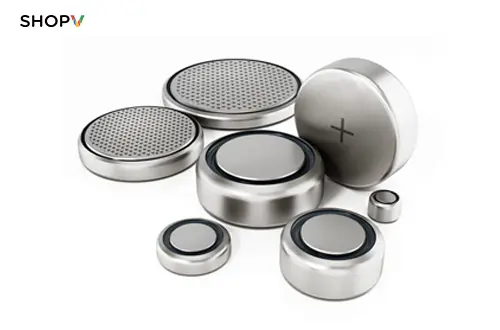Amazon's Coin Cell Battery Requirements Effective Immediately
Table of Contents
On April 18, 2024, Amazon issued new requirements for button battery consumer products that are effective immediately. The content states: If you sell consumer products containing button batteries or button batteries, you must provide Underwriters Laboratories-compliant products provided by ISO17025-approved laboratories. 4200A (UL4200A) certification and a general certificate of conformity to UL4200A. If valid compliance documents cannot be provided, the platform will cancel the listing.
What is a button battery?
Button batteries, also called button cell batteries, refer to batteries that are shaped like a small button. Generally speaking, they are larger in diameter and thinner in thickness (compared to cylindrical batteries such as AA batteries on the market).
Button batteries are classified according to their appearance. The corresponding battery categories include cylindrical batteries, square batteries, and special-shaped batteries.
Types of button batteries
Generally speaking, there are two common types of button batteries: rechargeable and non-rechargeable. Rechargeable include 3.6V rechargeable lithium-ion button batteries (LIR series), 3V rechargeable lithium-ion button batteries (ML or VL series); Rechargeable batteries include 3V lithium-manganese button batteries (CR series) and 1.5V alkaline zinc-manganese button batteries (LR and SR series).
The more common button batteries include AG3, AG10, AG13 batteries used in toys and gifts, batteries on computer motherboards, model CR2032 used in electronic dictionaries, CR2025 used in electronic dictionaries, CR2016 or SR44, SR626 used in electronic watches, etc.

For safety reasons, Amazon's new rules apply to all batteries and consumer products containing batteries. Therefore, many sellers received compliance requirements this time, and even some sellers of calculators, watches and other products were flagged.
Consumer products containing button batteries include but are not limited to: clocks, calculators, cameras, flameless candles, glitter clothing, shoes, holiday decorations, keychain flashlights, musical greeting cards, remote controls, etc.
Flagged sellers are required to provide compliance documents, packaging pictures and lab test results.
For sellers who have received a compliance request, if your product contains button batteries, it is recommended to first ask the factory if there are relevant documents. If not, contact the laboratory for testing as soon as possible.
If the product does not contain button batteries, it is an accidental injury. It is recommended to check the listing and then file a complaint to prove that the purpose and materials of the product do not contain button batteries, and consumers have been notified. No documentation is required.
Submit UL4200A Certificate of Conformity: Sellers require a UL4200A-compliant report from an ISO17025-accredited laboratory, which confirms that the product meets safety requirements, including durability testing of children’s battery compartments.
Some sellers reported that GCC certificate + UL4200A report should be made, which must reflect:
1) Safety battery compartment test
Items must have child-resistant battery compartments to prevent accidental contact by young children.
2) Warning labels
The packaging and the product itself must carry clear warnings about potential choking hazards and risks associated with battery ingestion.
General Certificate of Conformity (GCC): Sellers must provide a GCC certificate to prove that the product complies with consumer product safety rules. The certificate needs to contain comprehensive testing information and safety standards for the product.
Enhancing warning labels on products and packaging: To increase consumer safety awareness, all products containing button batteries and their packaging must carry warning labels that clearly indicate the potential risks of choking and battery ingestion.
FBA inventory processing reference solution
First of all, conduct self-examination and classification of the products that have been put into storage as soon as possible. If the products in inventory already have relevant certificates and reports, they can continue to be sold normally; if these necessary documents are lacking, the seller needs to take immediate action to contact the supplier or Manufacturers, let them supplement and improve certificates and reports as soon as possible.
Second, if the products in inventory do not have relevant certificates and reports, you can consider communicating with Amazon customer service or relevant teams to see if there can be special solutions or certain transitional policies to help.
Third, in response to the various challenges of Amazon's new regulations, we can make preparations by understanding them in advance and reduce potential risks caused by violations.
Frequently Asked Questions about Button Batteries
Is the button battery a lithium battery or a dry battery?
Rechargeable button batteries are lithium batteries. Non-rechargeable/disposable button cells are dry batteries.
What is the voltage of a button battery?
Generally speaking, there are two common types of button batteries: rechargeable and non-rechargeable. Rechargeable include 3.6V rechargeable lithium-ion button batteries (LIR series), 3V rechargeable lithium-ion button batteries (ML or VL series); Rechargeable batteries include 3V lithium-manganese button batteries (CR series) and 1.5V alkaline zinc-manganese button batteries (LR and SR series).










